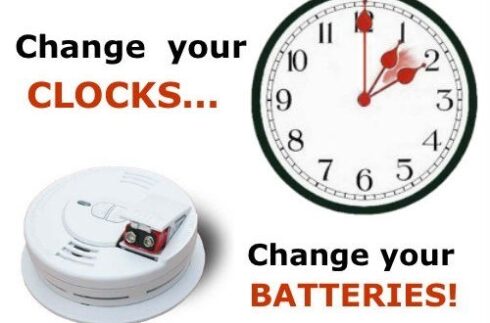Change your clocks, check your smoke alarms

As Daylight Saving Time comes to an end, the Firemen’s Association of the State of New York (FASNY) is reminding all New Yorkers to check the batteries in their smoke alarms and carbon monoxide detectors. They should also clean those units and test them to insure they are working. Alarms equipped with removable batteries should have them replaced.
Last year was particularly tragic as New York State led the nation in civilian fire deaths. According to data from the U.S. Fire Administration, 90 civilians in New York have died in fires this year, just behind the 107 deaths in the state of Pennsylvania. The winter season is typically the busiest time of the year for home fires, making the high number of deaths before the cold months troubling.
“Every second counts in a fire. Smoke alarms provide a critical warning that can help people escape safely during an emergency,” said FASNY President John P. Farrell. “If your smoke alarm has removable batteries, make sure you change them and test that the alarm is operational. Those with smoke alarms that have non-removable batteries should make sure they test their alarms at least once a month.”
A new state law went into effect last year intended to help address the high number of home fires in the state. The law banned the sale of smoke alarms with removable batteries. Smoke alarms equipped with sealed-in, non-removable batteries are nearly impossible to disable and require little maintenance.
Working smoke alarms save lives. Data from the National Fire Prevention Association (NFPA) shows that three of every five home fire deaths occur in homes without working smoke alarms or in homes lacking smoke alarms. A quarter of all smoke alarm failures are caused by dead batteries.
“Fire alarms need to be replaced every 10 years,” said President Farrell. “If you’re not sure when you last replaced the batteries or bought a smoke alarm, FASNY encourages you to purchase a new one with 10-year batteries. Smoke alarms should be placed on every level of the home and outside of sleeping areas.”
Smoke Alarm Tips from FASNY:
•Test alarms at least once a month by using the test button;
•If you have an alarm with a removable battery, be sure to check the batteries every six months, and change the batteries every year. If a battery is starting to lose its power, the unit will usually chirp to warn you. Do not disable the unit;
•Vacuum or blow out any dust that might accumulate in the unit;
•Never borrow a battery from an alarm to use somewhere else;
•Never paint a smoke or CO alarm;
•Install at least one smoke alarm on every floor of your home, including the basement and in (or near) each sleeping area;
•Smoke alarms should not be installed near a window because drafts could interfere with their operation;
•Families should also develop and practice a home fire escape plan.
For more information on smoke alarms, carbon monoxide alarms, and other information on fire safety and prevention, visit www.fasny.com and www.nfpa.org.
Provided information





